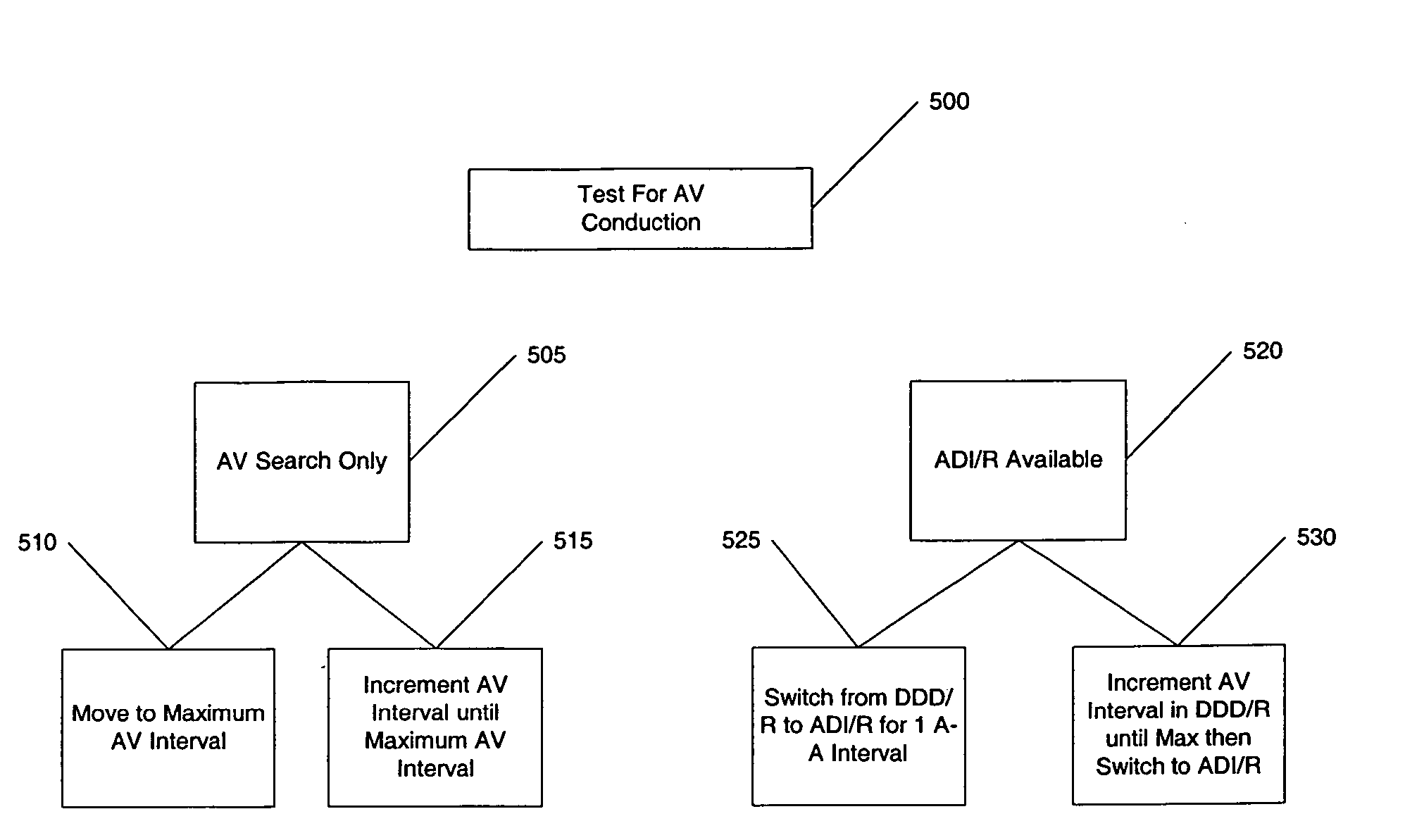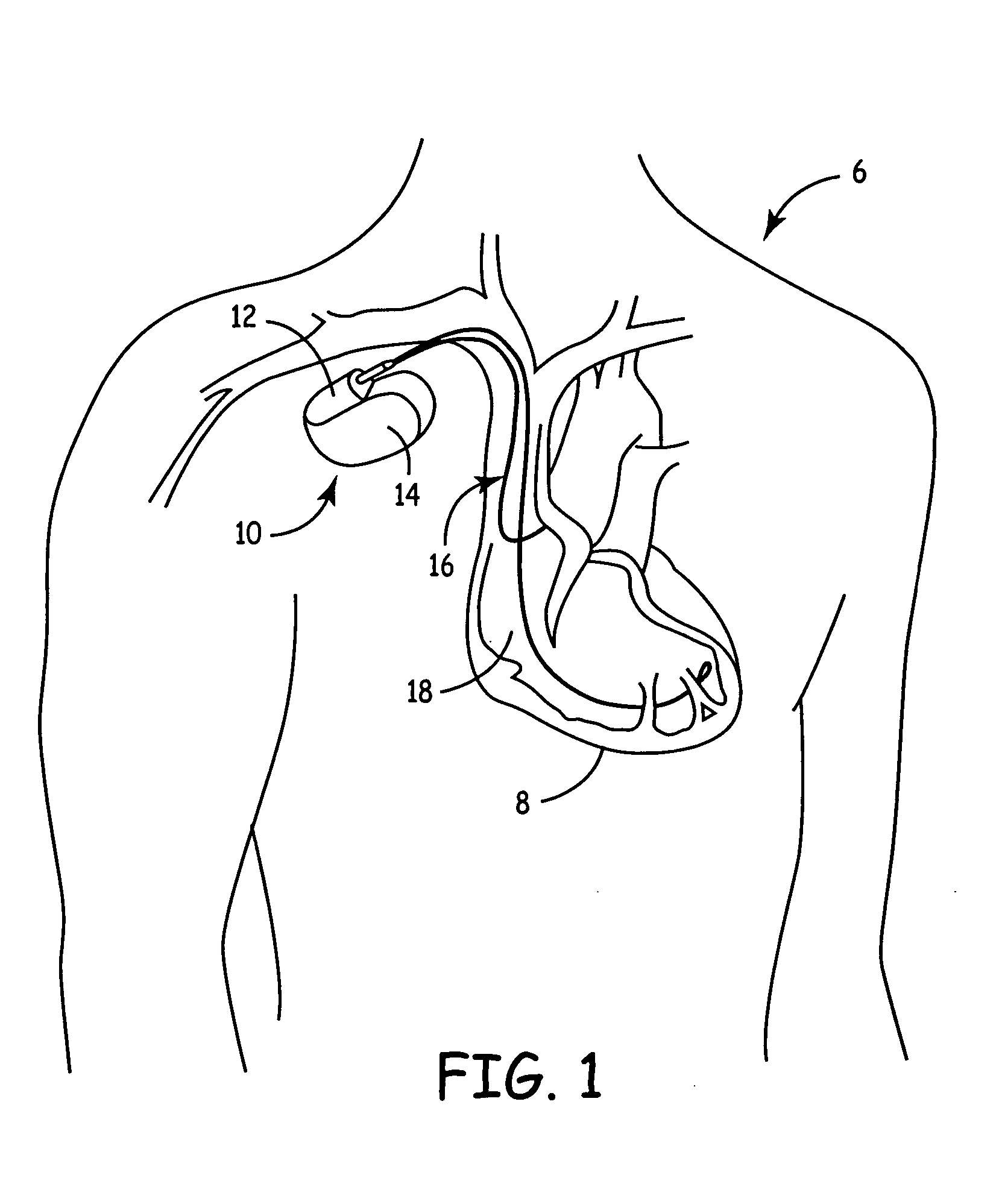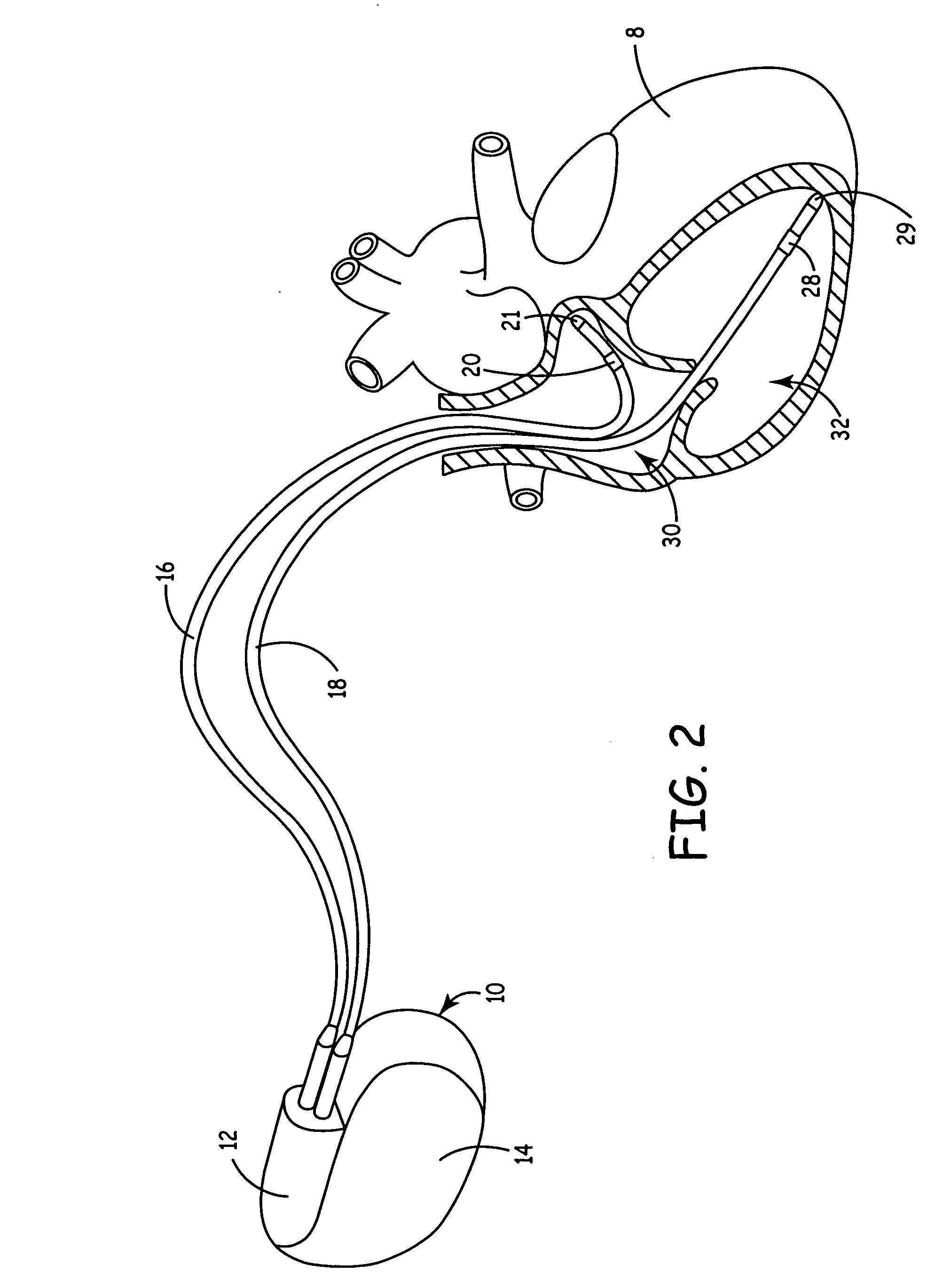Implantable medical device with ventricular pacing protocol including progressive conduction search
a medical device and progressive technology, applied in electrotherapy, heart stimulators, therapy, etc., can solve the problem of so long delay of intra-av
- Summary
- Abstract
- Description
- Claims
- Application Information
AI Technical Summary
Benefits of technology
Problems solved by technology
Method used
Image
Examples
case 1
[0082] Thus, the larger the value of E, the greater the effectiveness. As such, effectiveness is not simply the “gain” in the number of intrinsic ventricular depolarizations, nor is it simply the number of switches made. As an example, if over a given time period there were 100 switches made, and there were 10 beats with intrinsic conduction for each switch, then the patient has received 1000 less ventricular pacing pulses than might have occurred absent the VPP. If, over the same period of time, there were 10 switches made with 100 beats with intrinsic activity for each, the same 1000 ventricular paces have been avoided. However, according to the above formula the effectiveness is much greater in the later case. [0083] E=10 / 100=0.1 [0084] Case 2: E=100 / 10=10
[0085] In other words, the VPP is 100 times more effective in the second case than in the first. The same formula for effectiveness can be applied to AV search attempts rather than actual mode switches. That is Nswitches is re...
PUM
 Login to View More
Login to View More Abstract
Description
Claims
Application Information
 Login to View More
Login to View More - R&D
- Intellectual Property
- Life Sciences
- Materials
- Tech Scout
- Unparalleled Data Quality
- Higher Quality Content
- 60% Fewer Hallucinations
Browse by: Latest US Patents, China's latest patents, Technical Efficacy Thesaurus, Application Domain, Technology Topic, Popular Technical Reports.
© 2025 PatSnap. All rights reserved.Legal|Privacy policy|Modern Slavery Act Transparency Statement|Sitemap|About US| Contact US: help@patsnap.com



